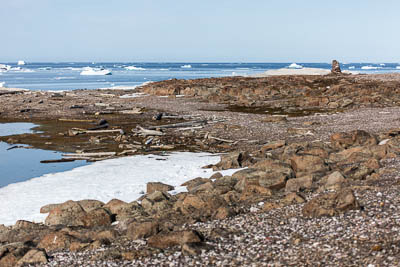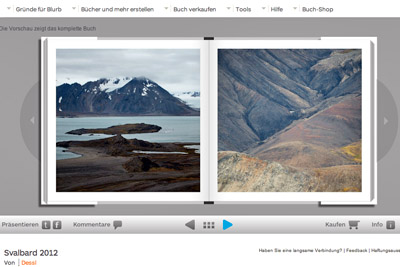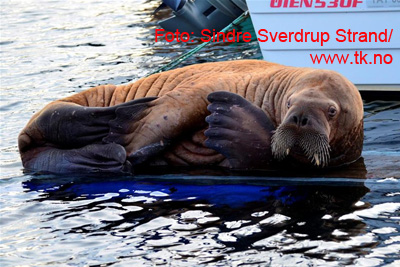-
current
recommendations- Liefdefjord
New page dedicated to one of Spitsbergen's most beautiful fjords. Background information and many photos.
- New Spitsbergen guidebook
The new edition of my Spitsbergen guidebook is out and available now!
- Liefdefjord
New page dedicated to one of Spitsbergen's most beautiful fjords. Background information and many photos.
Page Structure
-
Spitsbergen-News
- Select Month
- May 2025
- April 2025
- March 2025
- February 2025
- January 2025
- December 2024
- November 2024
- October 2024
- September 2024
- August 2024
- July 2024
- June 2024
- May 2024
- April 2024
- March 2024
- February 2024
- January 2024
- December 2023
- November 2023
- October 2023
- September 2023
- August 2023
- July 2023
- June 2023
- May 2023
- April 2023
- March 2023
- February 2023
- January 2023
- December 2022
- November 2022
- October 2022
- September 2022
- August 2022
- July 2022
- June 2022
- May 2022
- April 2022
- March 2022
- February 2022
- January 2022
- December 2021
- November 2021
- October 2021
- September 2021
- August 2021
- July 2021
- June 2021
- May 2021
- April 2021
- March 2021
- February 2021
- January 2021
- December 2020
- November 2020
- October 2020
- September 2020
- August 2020
- July 2020
- June 2020
- May 2020
- April 2020
- March 2020
- February 2020
- January 2020
- December 2019
- November 2019
- October 2019
- September 2019
- August 2019
- July 2019
- June 2019
- May 2019
- April 2019
- March 2019
- February 2019
- January 2019
- December 2018
- November 2018
- October 2018
- September 2018
- August 2018
- July 2018
- June 2018
- May 2018
- April 2018
- March 2018
- February 2018
- January 2018
- December 2017
- November 2017
- October 2017
- September 2017
- August 2017
- July 2017
- June 2017
- May 2017
- April 2017
- March 2017
- February 2017
- January 2017
- December 2016
- November 2016
- October 2016
- September 2016
- August 2016
- July 2016
- June 2016
- May 2016
- April 2016
- March 2016
- February 2016
- January 2016
- December 2015
- November 2015
- October 2015
- September 2015
- August 2015
- July 2015
- June 2015
- May 2015
- April 2015
- March 2015
- February 2015
- January 2015
- December 2014
- November 2014
- October 2014
- September 2014
- August 2014
- July 2014
- June 2014
- May 2014
- April 2014
- March 2014
- February 2014
- January 2014
- December 2013
- November 2013
- October 2013
- September 2013
- August 2013
- July 2013
- June 2013
- May 2013
- April 2013
- March 2013
- February 2013
- January 2013
- December 2012
- November 2012
- October 2012
- September 2012
- August 2012
- July 2012
- June 2012
- May 2012
- April 2012
- March 2012
- February 2012
- January 2012
- December 2011
- November 2011
- October 2011
- September 2011
- August 2011
- May 2011
- April 2011
- March 2011
- February 2011
- January 2011
- December 2010
- November 2010
- September 2010
- August 2010
- July 2010
- June 2010
- May 2010
- April 2010
- March 2010
- February 2010
- November 2009
- October 2009
- August 2009
- July 2009
- June 2009
- May 2009
- April 2009
- March 2009
- February 2009
- January 2009
- December 2008
- November 2008
- October 2008
- August 2008
- July 2008
- June 2008
- May 2008
- April 2008
- March 2008
- February 2008
- April 2000
- Select Month
-
weather information
-
Newsletter

| Guidebook: Spitsbergen-Svalbard |
Home → January, 2013
Monthly Archives: January 2013 − News & Stories
East Svalbard management plan: new proposal from the Sysselmannen
The ongoing, controversial process of a new management plan for East Svalbard seems to reach its final stages, as the Sysselmannen has on January 09 published his latest and most likely final proposal, which has already been sent to the Directorate for Nature Administration (DN) with the Environmental Ministry in Oslo for further bureaucratic treatment before it can be turned into valid law by the parliament.
The assessment within the DN is, however, anything but formality: the whole process failed already once years ago, when the Sysselmannen turned down the original proposal from Oslo as too drastic and lacking sufficient, knowledge-based foundation. In the following, the bureaucracy in Oslo made it clear where the competency to shape the new law really is: not in Longyearbyen. The same will most likely apply to future handling of some of the administration of East Svalbard, something that may be decisive in practice. The Sysselmannen, who is – as an institution – still believed to have his feet on the ground of reality at least to some degree, is apparently too soft in the eyes of the hardliners in Oslo, who care little about environmental or scientific benefit of their legislation as long as the public is largely being out of areas they consider their own playgrounds (in this context, it is interesting to have a look the legislation that is in force on Jan Mayen since 2010).
The current proposal is still largely driven by ideology rather than arguments seeking for real environmental or scientific benefits, but at least less dramatic than older versions which frankly suggested to close the whole thing mostly down, except from a few selected locations – still annoying but for most probably not the end of the world, in other words. According to the current proposal, East Svalbard is to be divided into 6 different zones, some covering large areas, others smaller locations, with different regulations for all of them (see map further down):
Zone A (yellow): “Scientific reference areas”. Anyone who wants to travel there needs to notify the Sysselmannen first, who can require changes of plans or stop them altogether. Comment: the DN is likely to demand this power for themselves. One can only guess what this would mean in practice for those who wish to travel there. The result might as well come close to a complete closure of the areas in question, which are large, although mostly (but not completely) irrelevant for tourism. The scientific need for and value of such reference areas is very controversial, no solid arguments that support such a need or value have been put forward, a fact that did not keep DN and other interested parties from declaring that such areas are necessary. By the way, an obligation to apply for permission to travel in the East Svalbard Nature Reserves – which cover the proposed reference areas and far more – is already in force and has been so for many years. One might wonder what the change will really be.
Zone B (orange): No admission between May 15 and August 15. This means in practice a closure of Lågøya and Tusenøyane for most of the relevant season. A similar regulation is already in force for the bird reserves, but these are restricted to smaller areas and locations, mostly the actual breeding colonies on smaller islands, rather than larger islands and whole island groups.
Zone C (green dots): site-specific regulations are to apply. This is a procedure which is getting increasingly common for polar tourism, for example in Antarctica.
Zone D (red dots): smaller areas around cultural heritage sites that are closed completely year round. In force since 2010.
Zone E (red): This is Kong Karls Land. No admission around the year. In force since many years ago.
Click here for a larger version of this map.
It is worth noticing that competences of the Sysselmannen to close smaller areas within the Nature Reserves for any reason are to be moved to the DN in Oslo and widened to the option to close also larger areas. This implies a danger that the DN can, in practice, still close large parts of the Nature Reserves by decree, without any further legal process and public discussions connected to it. It also shows the distrust of the Oslo bureaucracy to the Sysselmannen, who is often “too kind” in the perspective from Oslo offices. Others would say the Sysselmannen has still some idea what is really going on on the ground in Svalbard. It remains an interesting question why the Sysselmannen himself has written this into his proposal, rather than leaving it up to the DN.
According to the current proposal, Lågøya is amongst the areas which will be off limits between May 15 and August 15.
Source: Sysselmannen
Advanced Antarctica: with MV Ortelius to the Ross Sea
The Ross Sea is a remote part of a remote continent: Antarctica. Most tourist voyages visit the Antarctic Peninsula, whereas the Ross Sea area seldom sees cruise ships. You may call it “Antarctica for advanced learners”: For “beginners”, it means mainly a long, expensiv ship journey over often stormy seas. But for those who know more about it, it can be a dream of a lifetime to sail there in the wake of Scott, Amundsen and Shackleton (who was there before he famous Endurance-expedition).
“Beginners” do not need to read any further, but “advanced learners” who can make such a voyage on relatively short notice have now got an (almost) affordable opportunity to join an expedition to the Ross Sea with MV Ortelius, as the owner company Oceanwide Expeditions is offering attractive discounts for the voyage starting on February, 18, from New Zealand, and terminating March, 20, in Ushuaia (Argentina). For more information, please visit the website of Oceanwide Expeditions.
MV Ortelius in Antarctica. Additionally to the Zodiacs, the ship will also have 2 helicopters during the Ross Sea voyages.
Final remark: this page is not used for advertising for any third party, and the owner does not receive any payment (neither direct nor indirect) for posting this note, but finds the voyage absolutely worth spreading the word here.
Environmental toxins lead to thinner eggshells for Ivory gulls
Environmental toxins lead to thinner eggshells for Ivory gulls. This is one key result of a recent study made by scientists from the Norwegian Polar Institute (NPI), the Russian Antarctic Research Institute (AARI) in St. Petersburg and others. Samples were taken in Svalbard and arctic Russia in 2007. Compared with data from the early 20th century, eggshells from Spitsbergen and the Russian arctic are up to 17 % thinner.
Ivory gulls are on top of the food chain, and long-lived environmental toxins such as PCBs and DDT are accumulating towards the top of the food chain. The thinned eggshells are shown to have high concentrations especially of DDT.
DDT was gradually banned in many countries from the early 1970s onwards and is now used legally only in relatively small quantities to fight diseases such as malaria. After an ban on DDT in Norway, eggshell thickness of seabirds and birds of prey recovered again back to natural values.
Ivory gull in Spitsbergen.
Source: Norwegian Polar Institute
Polar bear attack on cameraman
The British camera man Gordon Buchanan, who was filming Polar bears for BBC in Spitsbergen for 12 months, was during his work attacked by a female Polar bear for about 40 minutes. Buchanan was sitting inside a plexiglass cage, which was strong enough to withstand the attack. A short video can be seen on Youtube zu sehen.
The attack took place on sea ice: A small ship can be seen in the background.
Polar bear attack on Gordon Buchanan.
Spitsbergen September 2012: photo collections
The Spitsbergen cruise with SV Antigua (the “glacier trip”) has already been documented on this site (click here to see photos and triplog). Meanwhile, 2 more photo-documentations have been created and are available online. Both feature impressive photography:
Alexander Lembke is professional photographer and joined us (again) as guide on this tour. He has published a very enjoyable slideshow on his website. On the same website, you will also find artistically impressive photo galleries of other expeditions in Spitsbergen.
Harald and Andrea Dessl have compiled a whole photo book with their material from the voyage in September 2012, which can be seen completely online (click here). A print version can also be ordered.
The photobook made by Harald and Andrea Dessl.
Walrus shot in Norway
First of all: Happy New Year to all visitors to this site! Unfortunately, the first news for 2013 are sad ones: A walrus that showed up as a surprise guest in Dalabukta near Kristiansund, west of Trondheim on the coast of Norway, was shot by the authorities after a few hours. The reason was said to be the bad health status of the animal.
According to witnesses, the walrus was in good condition regarding at least the nutrition status. As far as can be seen on photos, the animals seems to have been in good shape. Small injuries including broken tusks are normal for walrusses. The decision to shoot the animal, taken within a very few hours and without consulting experts, is met with substantial criticism and has now been reported to the police. Walrusses are protected since 1953.
It is quite rare, but not unheard of, that individual walrusses take long trips from their high arctic home waters south to the coasts of Norway or even Denmark or Spain during winter.
The walrus in Dalabukta near Kristiansund, January 01, 2013. The animal was shot after only a few hours by local authorities. Foto © Sindre Sverdrup Strand, tk.no
Source: Tidens Krav (several articles) and other Norwegian online media.
News-Listing live generated at 2025/May/02 at 21:49:55 Uhr (GMT+1)



































